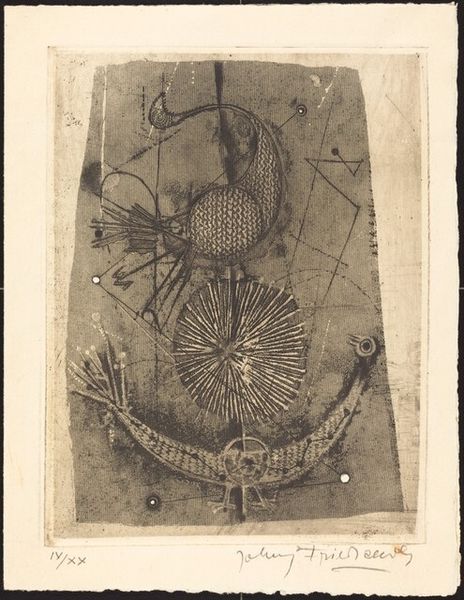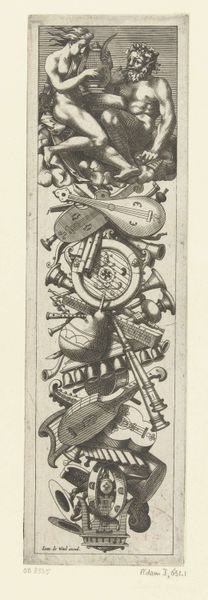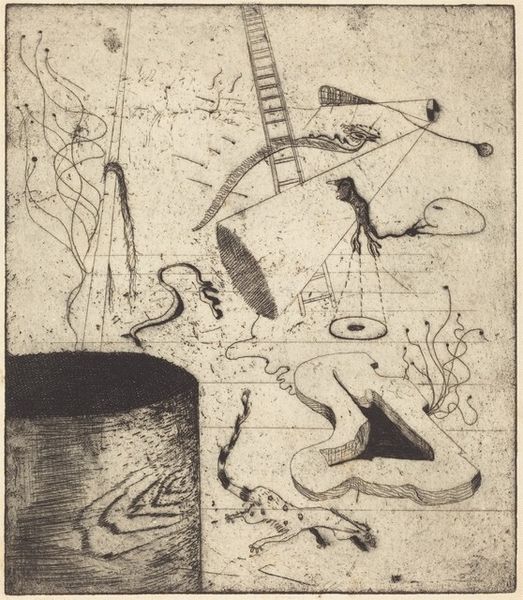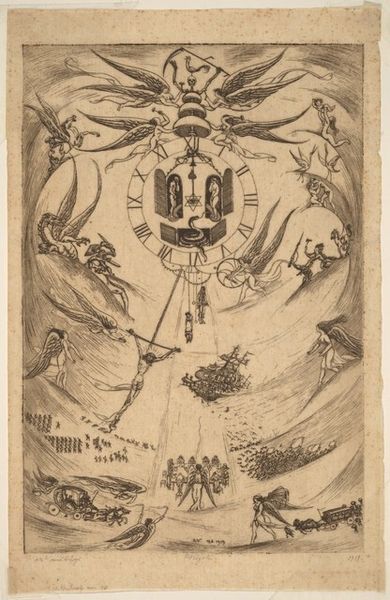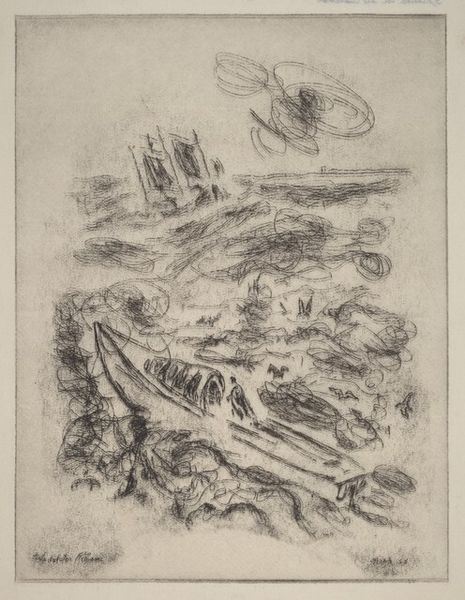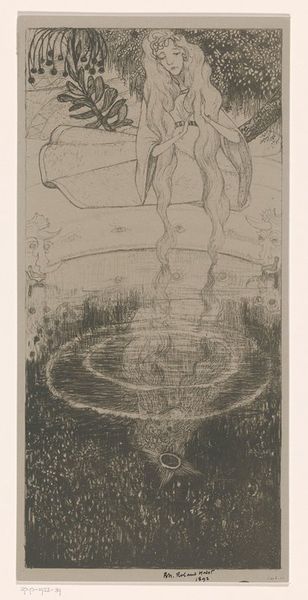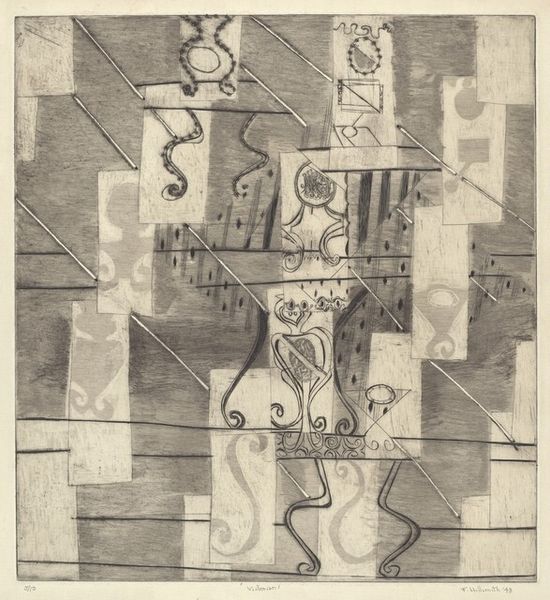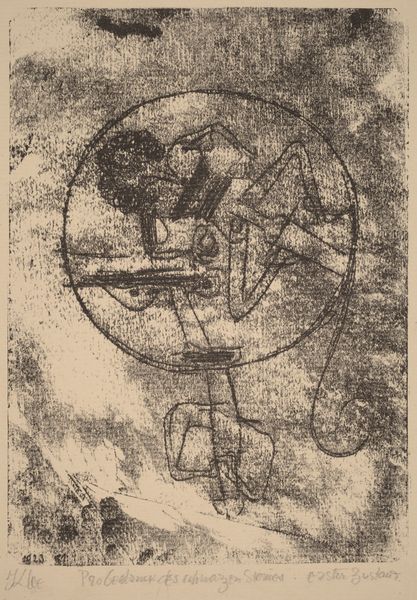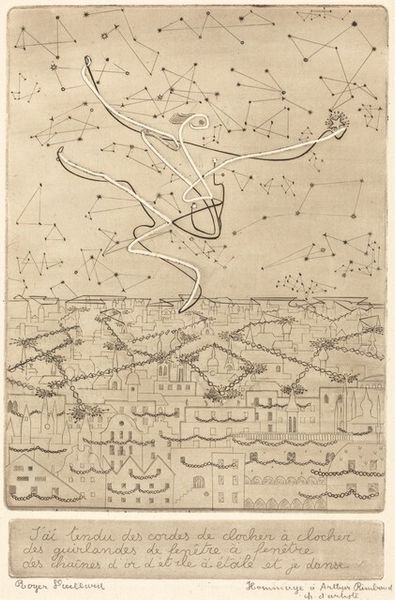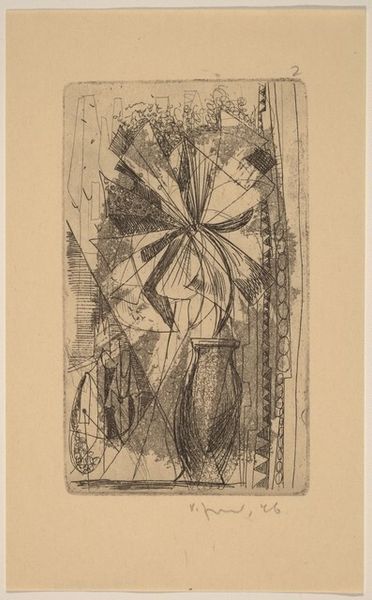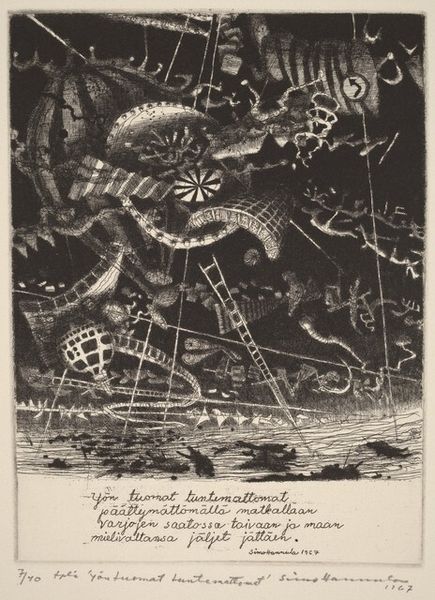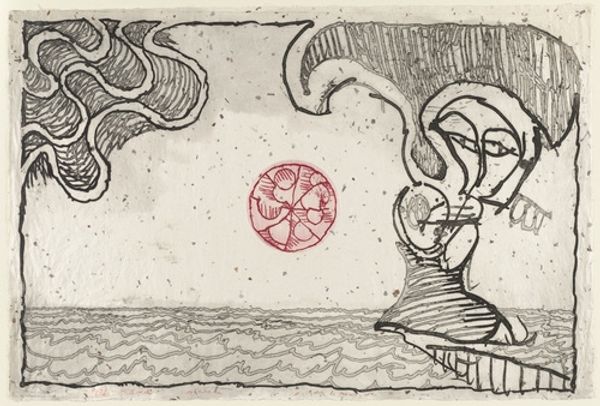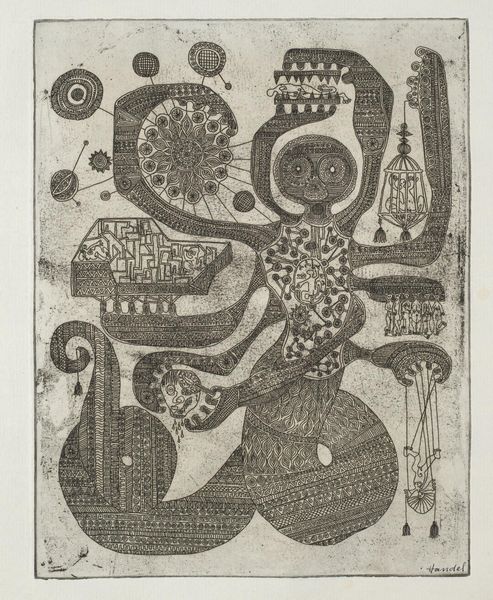
Krajina--Pták a blázen/Landscape--The Bird and the Lunatic 1994
0:00
0:00
print, etching
# print
#
etching
#
fantasy-art
#
figuration
#
geometric
#
line
Dimensions: image: 23.1 x 15 cm (9 1/8 x 5 7/8 in.) sheet: 35.3 x 24.4 cm (13 7/8 x 9 5/8 in.)
Copyright: National Gallery of Art: CC0 1.0
Editor: This print, "Landscape--The Bird and the Lunatic" by Veronika Palecková, created in 1994 using etching techniques, possesses a fascinatingly odd sensibility, combining delicate lines with surreal imagery. All those gears and broken clocks… What are we meant to make of it? Curator: Think about the late 20th century—1994 specifically. The fall of the Berlin Wall had happened just a few years prior; a new world order was still taking shape. Etchings like this provided space for a kind of symbolic reckoning. Consider the fragmented clocks – are they about the disruption of previous societal structures? The lunacy, the bird… how might these figures stand in for freedom and potential chaos in the face of new global paradigms? Editor: So you're saying the artist might be using these strange images to comment on political and social changes happening at the time? The lunacy… a breakdown, perhaps? Curator: Exactly. And that's what I mean by a symbolic reckoning. Artists began taking on a new role. Notice how the geometric forms appear, almost haphazardly, amidst more organic lines; this signifies a breakdown between past and present. Editor: It's interesting how the technical precision of the etching contrasts with the dreamlike quality of the image. Were printmaking and etching a widespread means of protest in Czech Republic, or Eastern Europe, during the transition to democracy? Curator: Printmaking, due to its reproducibility and accessibility, has a long history as a tool for political and social commentary. Its affordability enabled artists to circulate their ideas more broadly, challenging established power structures and promoting alternative viewpoints in societies experiencing major social change. And after the state commision program went away in these countries, there was a shift. Do you think a gallery is meant to represent, preserve or promote radical politics? Editor: Definitely all three to some extent, though I imagine galleries that exclusively promote one specific agenda could run into ethical conflicts. This artwork shows how much can be interpreted from one etching by thinking about art in its own time. Curator: Precisely. Context breathes life into even the most cryptic imagery.
Comments
No comments
Be the first to comment and join the conversation on the ultimate creative platform.
